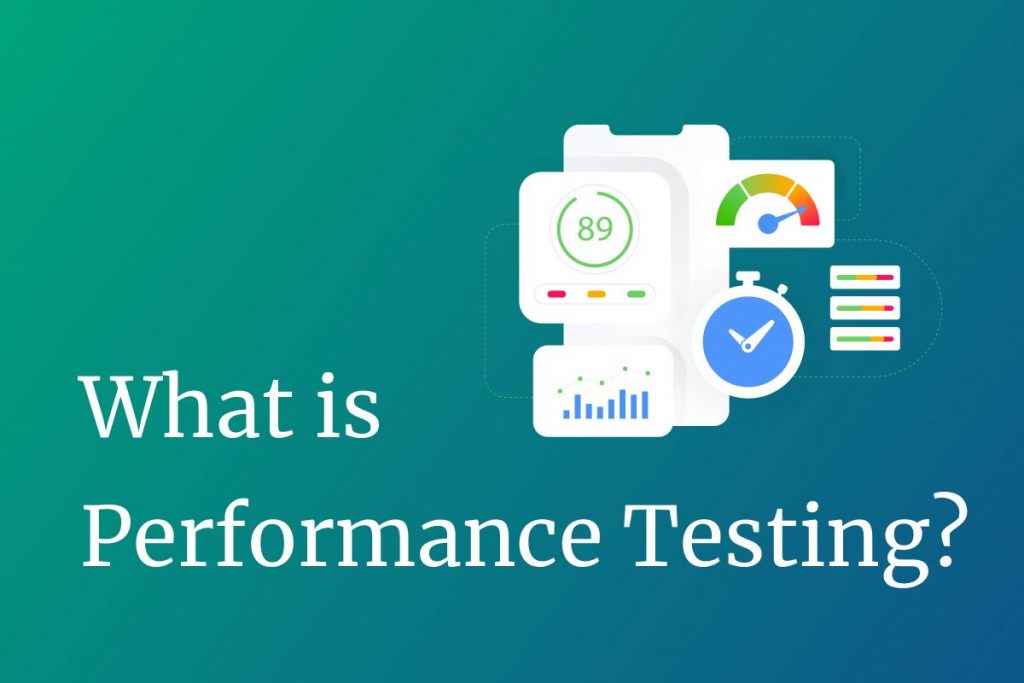Imagine a grand theatrical performance. Before the curtain rises, the actors rehearse tirelessly, fine-tuning their lines, perfecting their movements, and anticipating potential challenges. Similarly, in the world of software testing, load testing serves as a crucial dress rehearsal for your application. By simulating user traffic, load testing allows development teams to observe how their application performs under pressure, identifying and resolving potential issues before they impact real users. This proactive step reveals the system’s breaking points, validates its scalability, and ensures an optimal user experience even at peak times. Like a successful rehearsal, effective load testing instills confidence that the application can handle whatever comes its way when it’s time for real performance.
What is Load testing?
A software testing method, load testing is a type of performance testing used to evaluate how a system or application behaves under load, particularly when the system is under heavy load beyond normal use. The goal is to identify bottlenecks and optimize performance.
Load testing verifies that a system can withstand a certain number of concurrent users or transactions. For example, an e-commerce platform needs to know in advance how much traffic it can handle during peak times, such as during a sale. Proper load testing allows systems to be prepared for traffic surges and harden their systems to maintain a smooth user experience.
While load testing is a subset of performance testing, yet performance testing and load testing have different purposes and are often confused. Load testing focuses on evaluating how a system behaves under heavy load conditions or concurrent users or transactions. On the other hand, performance testing focuses on evaluating the overall system performance, specifically measuring metrics such as response time, throughput, and resource usage. When used together, these tests can improve a system’s overall performance. For more information, see this performance testing guide.
Why is Load testing important?
Load testing is essential to ensure that your system maintains high performance under realistic load conditions. In this section, we will dig deeper into how load testing contributes to improving system performance, ensuring scalability, and improving user experience.
System performance improvement
Load testing is a way to evaluate how a system performs under real-world conditions. It allows you to check peak capacity and identify potential bottlenecks. This early detection allows developers to optimize code, improve server configurations, or allocate additional resources to improve performance. For example, a 20% increase in database load speed can improve overall system speed by 10%.
Ensuring scalability
As a company grows, systems need to be able to handle increasing traffic efficiently. Load testing is ideal for mimicking future load conditions and evaluating the required scaling strategies. This process may address vertical scaling (increasing resources) and horizontal scaling (adding new systems). For example, it can help you decide whether to add more servers or improve the capacity of existing servers in preparation for a major event. Another major benefit is that it allows flexible resource expansion according to business demand.
Improving user experience
Load testing is also an important way to check system responsiveness to users. It is especially important to provide a fast and seamless user experience even during peak hours. Long response times tend to increase user dissatisfaction and bounce rates. As a countermeasure, it is important to shorten page load times. For example, in some cases, shortening load times by just one second can increase conversion rates by 7% or more.
Types of Load Tests
Load testing
Load testing is a testing methodology that evaluates how a system performs under normal load conditions. It verifies the system’s ability to handle an increased number of users, transactions, and other system operations in a realistic manner. For example, a common test is to verify whether a web application can handle a certain number of concurrent users without issues. Such tests can identify performance bottlenecks and lead to optimization. They can also estimate how much server resources are required to provide sufficient performance. Learn more
Stress testing
Stress testing evaluates how a system performs under load conditions that exceed its normal limits. This test is conducted to check how durable and stable the system is. It is important to ensure that the system continues to function reliably even when there is an unexpected spike in traffic. For example, it tests how much traffic an e-commerce site can withstand during a sale such as Black Friday. It also evaluates the system’s error-handling capabilities.
Capacity Testing
Capacity testing identifies the limits of how much load a system can efficiently handle. This allows you to plan the optimal allocation of hardware and software resources. It is also an important factor in determining infrastructure expansion plans. For example, measuring the number of transactions a database can process provides information that can be used to develop scalability plans to meet future increases in demand.
Spike testing
Spike testing evaluates how a system behaves when a sudden increase in load occurs. This test checks how responsive the system is to sudden increases in traffic or users. It is common to simulate increased traffic to a website during promotions or sales to test how well the system can handle it. Especially with cloud-based infrastructure, it may also be verified whether it can be quickly scaled.
Load testing procedure
Planning and Preparation
Careful planning and preparation are essential to ensure the success of load testing. First, clearly understand the system’s purpose and requirements and set the test’s scope. At this point, understand the expected load on the system and design the test scenario based on that information. When planning, you should also consider the selection of an appropriate sample size and monitoring method.
We also perform risk assessments and forecast how resources will fluctuate during testing, allowing us to respond quickly if any issues arise.
Scenario design
Scenario design is the core element of load testing and is essential for realistically simulating real user behavior. Scenarios determine which system functions are targeted and what data moves through the system, increasing the test results’ reliability.
In particular, more realistic results can be obtained by mimicking users’ specific usage patterns and considering gradual load increase patterns.
Test execution
Test execution is the core process of load testing. It is performed based on the scenarios you set, ensuring the stability of the test environment and the accuracy of the data collected using monitoring tools.
As you run, you can monitor targeted performance indicators and make adjustments in real-time.
Analysis of results
Once the tests are complete, we analyze the vast amounts of data collected to pinpoint system bottlenecks and performance bottlenecks.
Feedback and Improvement
Load testing is not just about planning and executing; it is also about having a mindset of constant improvement. A feedback loop based on test results will help you continually optimize system performance.
We listen to your feedback and adapt to new requirements and technological advances. We adjust our test plans and regularly benchmark to ensure a flexible, high-performing system.
How to Choose an Effective Load Testing Tool
Load testing tools play an essential role in evaluating the performance of software and systems. Each tool has its own features and advantages, and the selection should be based on the project and testing requirements. Tool selection is the foundation of successful load testing. Here, we introduce some popular load-testing tools and discuss their features and advantages in detail.
Apache JMeter
Apache JMeter is widely known as an open-source load testing tool. Originally designed for web applications, it now supports a variety of protocols, such as HTTP, HTTPS, SOAP, JDBC, and LDAP, and is capable of multi-functional testing. JMeter is GUI-based, easy to use, and designed to be beginner-friendly. You can extend its functionality by automating tests using scripts and adding plugins.
LoadRunner
LoadRunner is a commercial load testing tool widely used in enterprise-scale development environments. Its powerful scripting engine accurately simulates a variety of system environments, including large-scale traffic, to define your system’s limits. It also has detailed reporting capabilities that allow you to quickly identify issues for bug fixes and performance improvements.
Gatling
Gatling is an open-source project that is a high-performance load testing tool that runs on the Java platform. It has high throughput and is based on an asynchronous non-blocking design, providing a highly scalable test environment. It also features interactive report generation and real-time monitoring and is a developer-friendly tool with high script reusability.
Locust
Locust is a Python-based load testing tool that focuses on simplicity and flexibility. Its intuitive interface allows developers to create complex scenarios with simple Python scripts. In addition, Locust supports distributed testing and works effectively in cloud environments. It is an excellent choice for conducting scalable load testing and is suitable for projects of various sizes.
Load Testing Best Practices
Recreating realistic scenarios
Building scenarios that reflect real user behavior is essential for successful load testing. This helps accurately predict how the system will behave under user load, and keeping a wide variety of user behaviors in mind allows for more comprehensive testing.
For example, tests such as those conducted by Amazon evaluate the stability of the system by simulating the amount of traffic during a specific sale period. This experimental situation allows potential problems to be highlighted in advance and appropriate countermeasures to be implemented.
The Importance of Continuous Testing
Technology and user expectations are constantly evolving, which is why continuous load testing is essential. Regular testing prevents unexpected performance regressions after new features are released or systems are updated.
This continuous load testing is especially important in a DevOps environment, as rapid feedback between development and operations teams enables them to build more intelligent, adaptive systems.
Test Results Feedback Loop
Accurate feedback from test results is key to system improvement. By analyzing the results in detail and sharing them with development and quality assurance teams, we create an opportunity to take concrete steps to improve the system. This will ensure that the next load test will produce more accurate results.
For example, it would be more useful to include specific data in the results report, such as average response times, CPU utilization, memory usage, etc. This data will help identify weaknesses in specific components, not just general performance indicators. Data-driven improvements will also help improve long-term benchmarks.
Major e-commerce companies have built a “feedback loop” system to analyze and improve data in real-time, resulting in improved customer experience and efficient resource management. These cases can serve as valuable references when reevaluating your load test strategy.
Common Load Testing Challenges and Solutions
Misconfigured Environment
One of the most common challenges in load testing is environment misconfiguration. Improper environment configuration can lead to inaccurate test results and over- or under-estimate the system’s true performance. For example, the test environment significantly differs from the production environment. In that case, the results will not adequately reflect real-world operating conditions. To avoid this issue, it is important to make the test environment as close to the production environment as possible.
- Different virtual machine configurations: Test with the same hardware and software settings as in production.
- Different network settings: Simulate production network bandwidth.
- Database load misconfiguration: Use test data that mimics your production data volumes.
Resource Constraints
Resource constraints that cause test interruptions or incorrect results are inevitable issues in load testing. Limited server resources or network bandwidth can prevent sufficient load, causing test results to not reflect the real load situation. A possible solution to this problem is using cloud services to scale resources dynamically.
When requests are concentrated at peak times, scaling using cloud services such as AWS or Azure can handle this.
- Insufficient CPU and memory in the local environment: Add cloud resources.
- Network bandwidth restrictions: Build a test environment using a VPN or dedicated line.
Accurate interpretation of results
Accurate interpretation of load test results is critical. Misinterpretation can seriously hinder performance optimization efforts. Advanced analysis tools and techniques are needed to pinpoint bottlenecks and take the right measures.
- Commonly misunderstood metrics: Response time at peak load, average response time, etc. – how to properly interpret each metric.
- Discrepancies in interpretation due to human error: Introduction of third-party review and double checks.
- Utilizing automated analysis using tools: Real-time analysis using Splunk and ELK Stack.
How can SHIFT ASIA help?
At SHIFT ASIA, we understand that robust load testing is critical to launching reliable, high-performance applications. Our expert QA team provides tailored load testing solutions to help companies identify and resolve performance bottlenecks, ensuring your application can handle peak traffic smoothly.
Our load testing services are specifically designed to simulate real-world scenarios based on your application’s unique user patterns. We utilize industry-leading tools like Apache JMeter, LoadRunner, and Gatling to craft scenarios that mirror user behavior and proactively uncover and address performance issues. SHIFT ASIA’s approach integrates seamlessly into your CI/CD pipeline, enabling continuous load testing and feedback loops to maintain high performance even as your application evolves.
In addition to handling load testing setup, we provide detailed reports and actionable insights. Our team works closely with your developers to interpret results, implement optimizations, and ensure your application is prepared for growth. By partnering with SHIFT ASIA, you’ll enhance your application’s scalability and user experience and gain peace of mind knowing it can perform at its best, no matter the load.
Summary
Load testing is an essential process to optimize system performance and improve scalability. Load testing is a vital technique that helps companies and developers scale their web applications and is crucial to staying competitive in online businesses. By following best practices, selecting suitable tools, and addressing common challenges, teams can build applications that perform reliably even under peak demand. Effective load testing identifies issues and implements a proactive approach to maintain long-term performance stability and user satisfaction.
ContactContact
Stay in touch with Us




